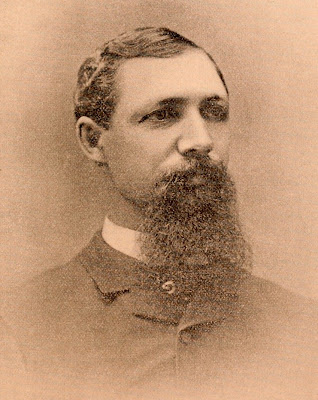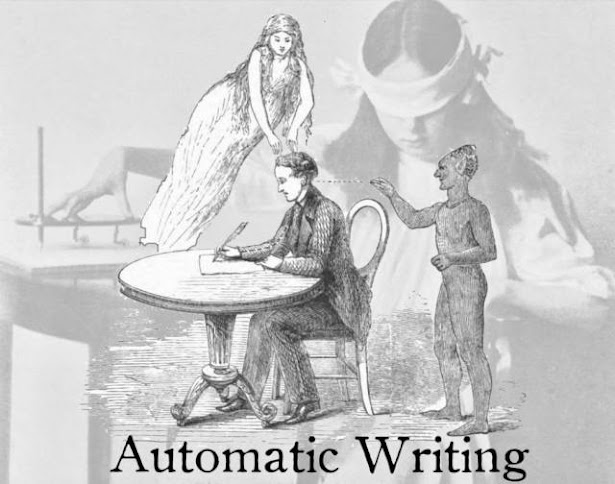ATHEIST DAN BARKER FOLLOWS IN MYTHICIST TRADITION OF PRETENDING TO KNOW ABOUT PHILO OF ALEXANDRIA
 |
| John E. Remsburg (d. 1919) |
Mythicists often make
statements about books that demonstrate they haven't read them. In his
book Godless, Dan Barker, Christian music man turned Atheist, repeats
a passage from another Mythicist about the first-century Jewish writer Philo of
Alexandria. In the process it becomes clear
that both he and the author of the quotation lack basic essential knowledge of
Philo and his writings:
One of the writers alive during the time
of Jesus was Philo-Judaeus (sometimes known as Philo of Alexandria). John E. Remsburg, in The Christ,
writes:
“Philo was born before the beginning of the
Christian era, and lived until long after the reputed death of Christ. He wrote
an account of the Jews covering the entire time that Christ is said to have
existed on earth. He was living in or near Jerusalem when Christ's miraculous
birth and the Herodian massacre occurred. He was there when Christ made his
triumphal entry into Jerusalem. He was there when the crucifixion, with its
attendant earthquake, supernatural darkness and resurrection of the dead took
place—when Christ himself rose from the dead and [254] in the presence of many witnesses ascended into heaven. These
marvelous events which must have filled the world with amazement, had they
really occurred, were unknown to him. It was Philo who developed the doctrine
of the Logos, or Word, and although this Word incarnate dwelt in that very land
and in the presence of multitudes revealed himself and demonstrated his divine
powers, Philo saw it not.”
Barker goes on to elaborate:
Philo might be considered the
investigative reporter of his day. He was
on location during the early first century, talking with people who should have
remembered or at least heard the stories, observing, taking notes, documenting. He reported nothing about Jesus.
John E. Remsburg’s book The Christ was published in 1909.[1] As
this quotation, and much of what else was said in the book, make it clear that he
was not a scholar of religion.
By the time I came across this passage in
Barker, its problems had already been pointed out by others, including the late
Maurice Casey, Professor of New Testament Languages and Literature at the
University of Nottingham, who accused Barker of “...taking
a typical mythicist path of quoting a scholar who was no good when he wrote
long ago, as well as out of date now.”[2] Casey’s remark is perfectly just but perhaps too
generous, first in referring to Remsburg, as a “scholar,” which, if by that we
mean someone with advanced degrees in the subjects he’s writing about, he never
really was, and second, in saying he is “out of date now.” Undoubtedly that is the case, but it should be
stressed that Remsburg was out of date even in his own day. The brutal fact is
that Remsburg was never “in date,” because his writings were simply rubbish, as
we shall see illustrated in the present case.
Casey goes on to correctly sum
up what Remsburg said as “a gross mixture of [14] events which did happen (the triumphal entry, crucifixion),
and events which did not happen. Philo
was nowhere near at the time, and had no reason to hear of the events that did
happen.”[3]
It is actually quite rare for
scholars to comment on the claims of writers like Barker, for the simple reason
that they are generally too ill informed, too filled with outdated and erroneous
information, to spend time that might be employed more usefully in engaging people
who actually know what they are talking about. So it is quite understandable
that after making the comment above, Casey excuses himself from engaging Barker
further on the grounds that “His book is important to this discussion for one
reason only: it can be taken to show the damaging effect of the fundamentalist
mindset upon attempts at critical enquiry, that it can result in a merely
different kind of preaching, which still takes notice only of its own
traditions.”[4]
While all that may be true, it
doesn’t help the general reader understand the basis of Casey’s saying that
Philo “was nowhere near at the time, and had no reason to hear of the events.”
So that is part of what I intend to clarify here.
To begin with the reader needs
to understand that what Remsburg says, and Barker says in expanding on it, reveals
their essential ignorance of who Philo was and what he did. Following are some corrections of the erroneous
statements of the two authors:
(1) Philo didn’t live in or near Jerusalem, nor even in Palestine. Rather he lived in Alexandria Egypt, where he was a prominent member of the Jewish Community. We know very little about his life, but we do know that he went to Jerusalem on at least one occasion during his life, because of an incidental reference to something he once saw, while on his way “to our ancestral temple to offer prayers and sacrifices” (On Providence 2.64). But the passage provides no clue as to the time-frame of the incident.
(2) Philo never “wrote an account of the Jews covering the entire time that Christ is said to have existed on earth.” In fact, he never wrote any kind of history of the Jews at all. Philo was not a historian nor was he much interested in the historian’s task. He was a philosophical and mystical interpreter of the Biblical text. The closest he ever came to writing anything like history is in his accounts of a pogrom against the Jews in Alexandria and his experiences in that connection as a representative to Rome of the Alexandrian Jewish Community.
The word “Jerusalem” occurs only seven
times in the writings of Philo (On Dreams
II 250; Embassy to Gaius 278,
288, 312, 313, 315).[5] Only
the first is from Philo’s own hand, the other six are in a letter from Agrippa
I to the Emperor Gaius, which Philo copied into his account.
The name “Pilate” only appears twice in Philo, but again not because Philo uses it, but because it too was included in the same Agrippa I letter mentioned above (Embassy to Gaius 299, 304).
The name “Pilate” only appears twice in Philo, but again not because Philo uses it, but because it too was included in the same Agrippa I letter mentioned above (Embassy to Gaius 299, 304).
In the letter Philo copied, Agrippa I also
mentions his grandfather Herod the Great four times (Embassy to Gaius 294, 296, 297, 299), but apart from this Philo never
mentions him at all. He does, however, uses the name Herod once when referring
to Agrippa I as “Herod Agrippa (Flaccus
25).
Agrippa I, whose death is reported in chapter 12 of the New Testament Book of Acts, is mentioned several times in Philo, due to the part both Agrippa and Philo played together in their attempt pacify the Emperor Gaius when he’d taken out against the Jews (Embassy to Gaius 179, 261, 263, 268, 269, 291, 294, 325, 331, 333). Philo also mentions Agrippa I in connection with a visit he made to Alexandria (Flaccus 25, 39, 103).
Later, in the time of Gaius’s successor Claudius, Philo’s nephew Marcus Julius Alexander would marry Agrippa I’s daughter Bernice, who we meet in Acts 25, where she and her brother Agrippa II visit the Roman official Festus in Caesarea and hear the preaching of the apostle Paul. But it is not Philo who tells us that his nephew married Bernice, it was the Jewish historian Josephus (Antiquities 19.5.1 [276-277]). So far as I have been able to discover, Philo doesn’t mention a number of other first-century Jerusalem luminaries, including, for example, the prominent teachers Hillel and Gamaliel and the High Priests Annas and Caiaphas.
All of this simply underscores the
silliness of Barker’s attempt at driving home the erroneous claims he had
uncritically taken over from Remsburg:
Philo might be considered the investigative reporter of his day. He was on location during the early first century, talking with people who should have remembered or at least heard the stories, observing, taking notes, documenting.
By saying this, Barker merely showcases his basic unfamiliarity with Philo and his work, his unquestioning faith in writers from his own camp, and his willingness to pretend to knowledge he doesn’t have.
[1] John E.
Remsburg, The Christ: A Critical Review and Analysis
of the Evidence of His Existence (New York: Truth Seeker Company, [1909]), 25-26.
[2] Maurice Casey, Jesus: Evidence and Argument Or Mythicist
Myths (London: T&T Clark/Bloomsbury, 2014), 13.
[3] Ibid., 13-14.
[4] Ibid., 14.
[5]
Numbers of occurrences of words derive
from Peder Borgen, Kåre Fuglseth, and Roald Skarsten, The Philo Index: A Complete Greek Word Index to the Writings of Philo
of Alexandria (Grand Rapids & Cambridge: Eerdmans / Leiden, Boston, Köln:
Brill, 2000).
[6] C. Dennis Mckinsey, Biblical
Errancy: A Reference Guide (Amherst, NY: Prometheus Books, 2000), 317-18.
[7] Victor
J. Stenger’s The New Atheism. Taking a Stand for Science and Reason, (Amherst,
NY: Prometheus Books, 2009), 58.



Comments
Post a Comment